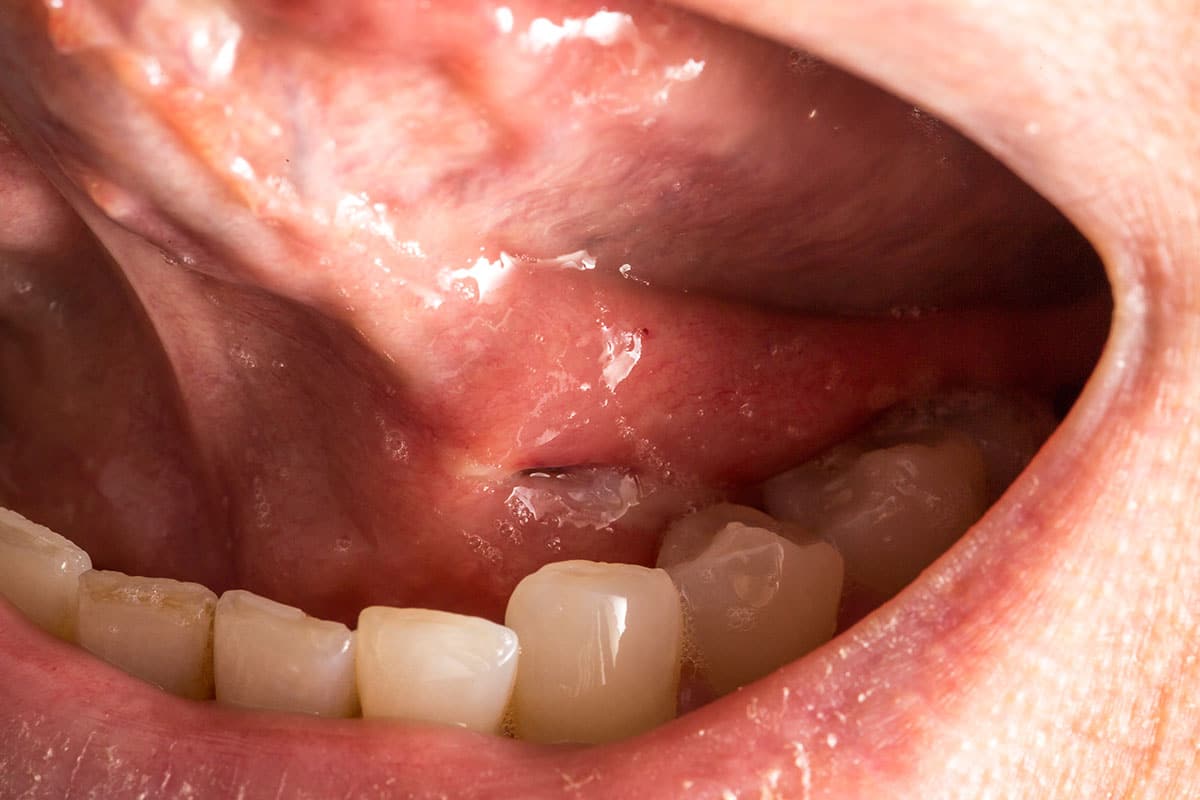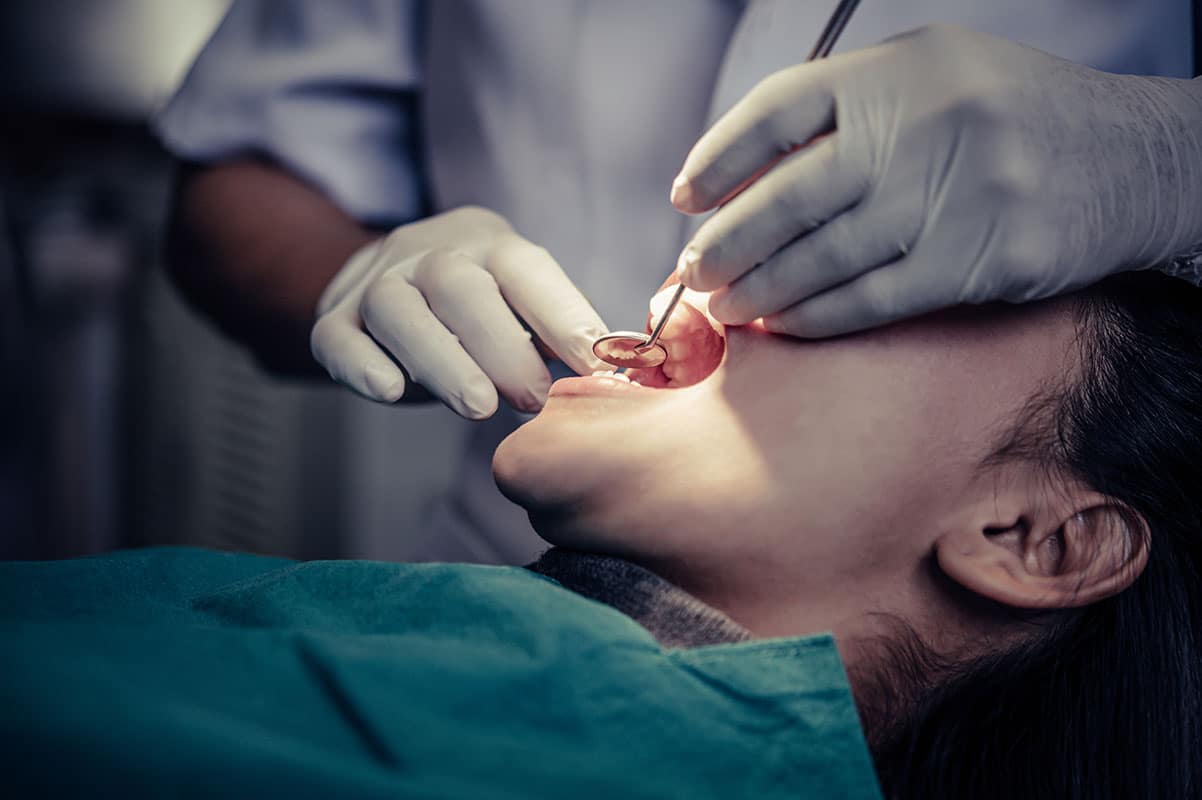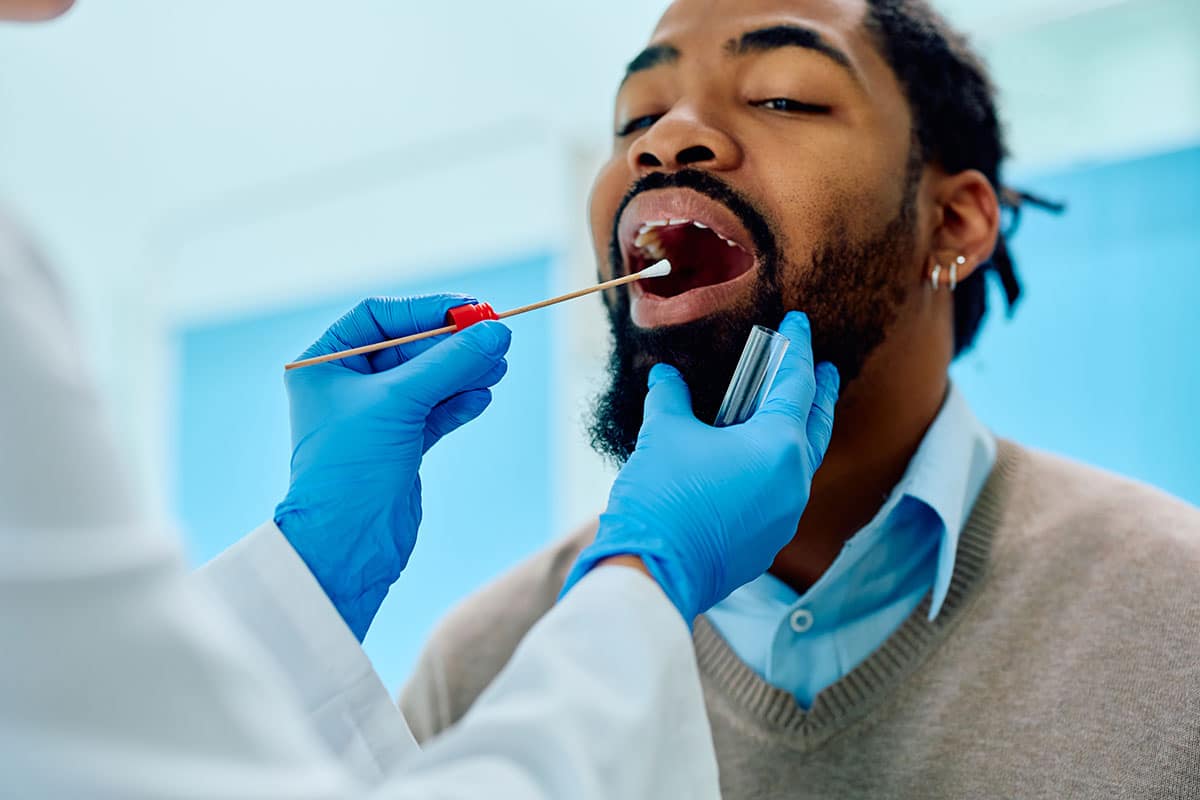Oral cancer screenings are crucial to maintaining overall health, as early detection significantly improves the chances of successful treatment and recovery. Many people do not realize that oral cancer can develop silently, with little to no symptoms in its early stages. Regular screenings performed by a dentist or oral healthcare provider can identify abnormalities before they progress into more advanced and harder-to-treat conditions. These exams are crucial for individuals at higher risk, such as those who use tobacco or alcohol, have a family history of cancer, or have been exposed to the human papillomavirus (HPV).
This article will discuss the basics of oral cancer, including its common signs and symptoms, available treatment options, and preventive measures. By understanding the importance of oral cancer screenings and the steps that can be taken to lower risk, individuals can take proactive control of their oral health and improve their chances of early intervention if necessary.
Before we continue, we need to be clear that this article is not medical advice and that if you are concerned about oral cancer, you should speak with your dentist or medical practitioner directly as soon as possible. Let’s discuss some of the signs and symptoms of oral cancer and what you need to know.
Table of Contents
Understanding Oral Cancer
Oral cancer is a head and neck cancer that typically originates in the squamous cells that line the lips and the inside of the mouth. It develops when genetic mutations cause cells to grow uncontrollably, forming malignant tumours. These changes can be triggered by various environmental and lifestyle factors, such as tobacco use, excessive alcohol consumption, prolonged sun exposure, and infections like the human papillomavirus (HPV).
The progression of oral cancer can be categorized into different stages. In the early stages, abnormal cells may appear as small, painless sores or discoloured patches inside the mouth. As the disease advances, it can spread to nearby tissues, including the lymph nodes in the neck, making treatment more complex. However, medical advancements in screening, imaging, and targeted therapies have significantly improved the prognosis for patients diagnosed with oral cancer.
A positive outlook is possible with early detection. When diagnosed in the initial stages, oral cancer has a high survival rate, with many patients achieving full recovery following appropriate treatment. Medical professionals, including dentists and oral surgeons, play a crucial role in early detection through routine screenings. Innovations in treatment, such as minimally invasive surgical procedures, precision radiation therapy, and immunotherapy, offer more effective and less disruptive options for patients, helping to restore function and maintain quality of life.
Common Signs and Symptoms of Oral Cancer

The symptoms of oral cancer can vary from person to person and may not always be immediately noticeable. However, there are several common warning signs to watch for, including:
Persistent Mouth Sores
One of the most common signs of oral cancer is a sore or ulcer in the mouth that does not heal within two weeks. These sores may appear red, white, or a mixture of both and can be painful or painless. Unlike common mouth ulcers that heal quickly, cancerous sores persist and may grow more significant over time.
Unexplained Bleeding in the Mouth
Frequent or unexplained bleeding in the mouth that is not caused by trauma or injury can be a sign of an underlying issue, including oral cancer. This could indicate that abnormal tissue growth interferes with the affected area’s blood vessels.
Lumps or Thickening in the Mouth or Neck
The development of lumps, bumps, or thickened areas in the cheeks, gums, tongue, or throat may indicate oral cancer. These growths may not always be painful, but a dental professional should evaluate them. Often, these lumps are detected by the patient or a dentist during a routine check-up.
Red or White Patches in the Mouth
Red (erythroplakia) or white (leukoplakia) patches in the mouth are common precancerous conditions. White patches can result from excessive cell growth, while red patches often indicate abnormal tissue changes. If these patches do not go away on their own, they should be assessed by a dentist or oral surgeon.
Persistent Sore Throat or Hoarseness
A chronic sore throat, hoarseness, or changes in the voice that last for more than two weeks may be signs of oral or throat cancer. This may occur due to irritation from abnormal growths or tumours pressing against the throat and vocal cords.
Difficulty Chewing or Swallowing
If you experience persistent difficulty chewing, swallowing, or moving your tongue or jaw, this may indicate a problem that requires medical attention. This symptom can be due to a tumour obstructing normal functions in the mouth and throat.
Numbness or Tingling in the Mouth
A loss of sensation or tingling in the mouth, face, or tongue can be a sign of nerve involvement due to oral cancer. As tumours grow, they can press against nerves, causing these sensations.
Changes in Bite or Loose Teeth
Oral cancer can affect the tissues that support the teeth, leading to unexplained loose teeth or changes in how your teeth fit together when you bite. Unlike periodontal disease, which often has other accompanying symptoms such as gum recession, oral cancer affects the underlying structures differently.
Ear Pain Without Infection
Persistent ear pain that is not associated with an ear infection may indicate the spread of oral cancer to nearby tissues. This often results from tumours pressing against nerve pathways linked to the ear.
It’s important to understand that these signs and symptoms do not necessarily signify a patient has oral cancer, but they are cause for concern. They should be checked out by your dentist, oral surgeon or healthcare practitioner as soon as possible.
Risk Factors for Oral Cancer
While anyone can develop oral cancer, certain factors increase the risk, including:
- Tobacco Use: Smoking cigarettes, cigars, or pipes, as well as chewing tobacco, significantly increases the risk of oral cancer. The harmful chemicals in tobacco cause genetic mutations that can lead to the development of cancerous cells.
- Excessive Alcohol Consumption: Heavy drinking, especially when combined with tobacco use, raises the likelihood of developing oral cancer. Alcohol can weaken cells, making them more susceptible to carcinogens.
- HPV Infection: Certain strains of the human papillomavirus (HPV) are linked to an increased risk of oropharyngeal cancer. HPV-related oral cancers tend to develop at the base of the tongue and throat.
- Prolonged Sun Exposure: Ultraviolet (UV) radiation from the sun can lead to lip cancer. Using lip balm with SPF protection and avoiding excessive sun exposure can help reduce this risk.
- Poor Oral Hygiene: Neglecting oral health can contribute to infections and increased susceptibility to oral cancer. Chronic gum disease and untreated infections create a favourable environment for abnormal cell growth.
- Family History: A genetic predisposition may make some individuals more prone to developing oral cancer.
The Importance of Oral Cancer Screenings and Exams at Your Dentist

Regular oral cancer screenings and exams are crucial for early detection and successful treatment. Dentists are often the first healthcare providers to notice signs of oral cancer during routine check-ups. These screenings involve a thorough examination of the mouth, throat, and surrounding tissues to identify any abnormalities, such as unusual sores, red or white patches, lumps, or tissue changes.
Some dentists may use advanced screening tools, such as fluorescent light devices or specialized dyes, to detect precancerous or cancerous cells more accurately. If any suspicious areas are found, the dentist may recommend a biopsy or refer the patient to an oral specialist for further evaluation.
Early detection through screenings significantly increases the chances of successful treatment and reduces the need for more aggressive procedures. The American Dental Association recommends that adults, particularly those at higher risk (such as tobacco or alcohol users), receive oral cancer screenings at least once a year.
By incorporating regular oral cancer screenings into your dental check-ups, you can take an essential step in protecting your health and ensuring any potential issues are identified early. It’s easy and doesn’t take much additional time either.
Other Ways Your Dentist or Oral Surgeon Can Help
Regular dental visits play a crucial role in the early detection of oral cancer. Dentists and oral surgeons are trained to recognize early warning signs and take necessary action. They also educate patients on risk factors, prevention, and the importance of oral health.
Dentists may use advanced diagnostic tools such as oral cancer screening devices, which use light technology to detect abnormalities that may not be visible to the naked eye. If an abnormality is detected, they may recommend further tests, such as a biopsy, to confirm the diagnosis. Additionally, dental professionals can guide patients on lifestyle changes that reduce their risk of developing oral cancer, such as quitting smoking, moderating alcohol intake, and maintaining proper oral hygiene.
Biopsy and Diagnosis

Your dentist or oral surgeon may recommend a biopsy if a suspicious lesion or growth is detected. A biopsy involves removing a small tissue sample from the affected area for laboratory analysis to determine whether cancerous cells are present.
Different types of biopsies may be performed depending on the location and characteristics of the lesion:
Incisional Biopsy: A small portion of the abnormal tissue is removed for examination.
Excisional Biopsy: This procedure removes the entire lesion, and it is often performed if the affected area is small and easily accessible.
Brush Biopsy: A non-invasive technique where a brush is used to collect surface cells for microscopic evaluation.
Fine Needle Aspiration (FNA) Biopsy: Used for lesions in deeper tissues, such as lymph nodes, where a thin needle extracts cells for analysis.
Once the biopsy results are available, a pathologist will determine if the cells are benign, precancerous, or malignant. If cancer is confirmed, additional tests, such as imaging scans (CT, MRI, or PET scans), may be used to assess the extent of the disease and guide treatment planning. Early diagnosis significantly improves treatment outcomes, making regular screenings and prompt medical evaluation essential.
Treatment Options
Treatment for oral cancer depends on the patient’s stage, location, and overall health. The primary goal of treatment is to remove or destroy cancer cells while preserving as much function as possible. Some of the main treatment options include:
Surgery: Surgery is often the first line of treatment, especially for localized tumours. The procedure may involve removing the tumour, affected lymph nodes, and surrounding tissues if necessary. Reconstructive surgery may be required to restore function and appearance after tumour removal.
Radiation Therapy: This treatment uses high-energy X-rays or particles to target and destroy cancer cells. It is often used as a primary treatment for early-stage cancer or in combination with surgery and chemotherapy for more advanced cases.
Chemotherapy: Chemotherapy involves the use of powerful drugs to kill cancer cells or slow their growth. It is typically used for advanced-stage oral cancer or in cases where surgery and radiation alone are not sufficient.
Targeted Therapy: Targeted drugs work by interfering with specific molecules involved in cancer growth. One example is cetuximab, which targets a protein called epidermal growth factor receptor (EGFR) to slow tumour progression.
Immunotherapy: This treatment boosts the body’s immune system to help fight cancer. It is particularly beneficial for patients with recurrent or metastatic oral cancer that does not respond well to conventional treatments.
Combination Therapy: Many cases of oral cancer require a combination of treatments, such as surgery followed by radiation and chemotherapy, to achieve the best outcome.
Each patient’s treatment plan is tailored based on the severity of the disease, overall health, and personal preferences. Advances in medical technology and therapies have significantly improved oral cancer patients’ survival rates and quality of life, making early detection and intervention more critical than ever.
Preventing Oral Cancer

While oral cancer cannot always be prevented, there are several proactive measures that can significantly reduce the risk:
Avoid Tobacco Products: Cigarettes, cigars, and smokeless tobacco products significantly increase the risk of oral cancer. Quitting tobacco use can drastically lower the likelihood of developing cancerous cells in the mouth.
Limit Alcohol Consumption: Excessive alcohol use is another major risk factor. If consumed, it should be done in moderation, as heavy drinking combined with tobacco use greatly increases cancer risk.
Protect Your Lips from UV Exposure: Prolonged exposure to the sun can lead to lip cancer. Wearing a wide-brimmed hat and using a lip balm with SPF can help minimize the risks.
Practice Good Oral Hygiene: Brushing twice daily, flossing regularly, and visiting the dentist for routine check-ups can help detect any abnormal growths early.
Eat a Healthy Diet: A well-balanced diet rich in fruits and vegetables provides essential antioxidants that may help prevent cancerous cell development.
Get Vaccinated Against HPV: The human papillomavirus (HPV) is a known risk factor for oral and throat cancers. Getting vaccinated can help protect against the strains of HPV linked to oral cancer.
Regular Dental Check-Ups and Screenings: Dentists are trained to identify early signs of oral cancer. Attending regular screenings can lead to early detection and a better prognosis.
Implementing these preventive measures can significantly lower an individual’s risk of developing oral cancer and improve their overall oral health.
Conclusion
Oral cancer is a serious condition that requires early detection for successful treatment. Recognizing the signs and symptoms, understanding risk factors, and scheduling regular dental check-ups are key to catching oral cancer early. If you experience any persistent changes in your mouth, such as sores, lumps, or difficulty swallowing, consult your dentist or oral surgeon immediately. By staying proactive about oral health, you can help protect yourself against the dangers of oral cancer and improve your chances of early intervention and successful treatment.
Check us out on Facebook and Twitter for daily information about Oral Health from Martindale Dental, or visit our offices in Hamilton, and St. Catharines.
Have more questions?
Please contact us for all inquiries or to book an appointment with one of our convenient clinic locations. We look forward to hearing from you.




